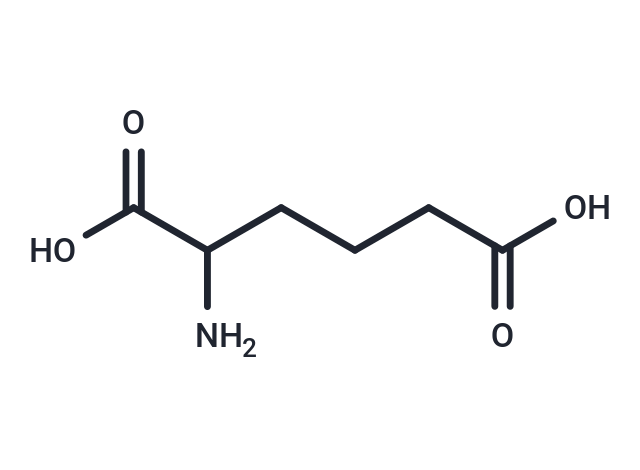Shopping Cart
- Remove All
 Your shopping cart is currently empty
Your shopping cart is currently empty

Aminoadipic acid (DL-2-Aminoadipic acid) (2-aminoadipate) is a metabolite in the principal biochemical pathway of lysine. It is an intermediate in the metabolism (i.e. breakdown or degradation) of lysine and saccharopine. It antagonizes neuroexcitatory activity modulated by the glutamate receptor N-methyl-D-aspartate (NMDA). Aminoadipic acid has also been shown to inhibit the production of kynurenic acid, a broad spectrum excitatory amino acid receptor antagonist, in brain tissue slices.

| Pack Size | Price | Availability | Quantity |
|---|---|---|---|
| 500 mg | $42 | In Stock | |
| 1 g | $74 | In Stock | |
| 1 mL x 10 mM (in H2O) | $46 | In Stock |
| Description | Aminoadipic acid (DL-2-Aminoadipic acid) (2-aminoadipate) is a metabolite in the principal biochemical pathway of lysine. It is an intermediate in the metabolism (i.e. breakdown or degradation) of lysine and saccharopine. It antagonizes neuroexcitatory activity modulated by the glutamate receptor N-methyl-D-aspartate (NMDA). Aminoadipic acid has also been shown to inhibit the production of kynurenic acid, a broad spectrum excitatory amino acid receptor antagonist, in brain tissue slices. |
| Alias | DL-2-Aminoadipic acid |
| Molecular Weight | 161.16 |
| Formula | C6H11NO4 |
| Cas No. | 542-32-5 |
| Smiles | C(C(C(O)=O)N)CCC(O)=O |
| Relative Density. | 1.333 g/cm3 |
| Storage | Powder: -20°C for 3 years | In solvent: -80°C for 1 year | Shipping with blue ice. | ||||||||||||||||||||
| Solubility Information | DMSO: Insoluble H2O: 10 mM, Sonication is recommended. | ||||||||||||||||||||
Solution Preparation Table | |||||||||||||||||||||
H2O
| |||||||||||||||||||||

Copyright © 2015-2025 TargetMol Chemicals Inc. All Rights Reserved.